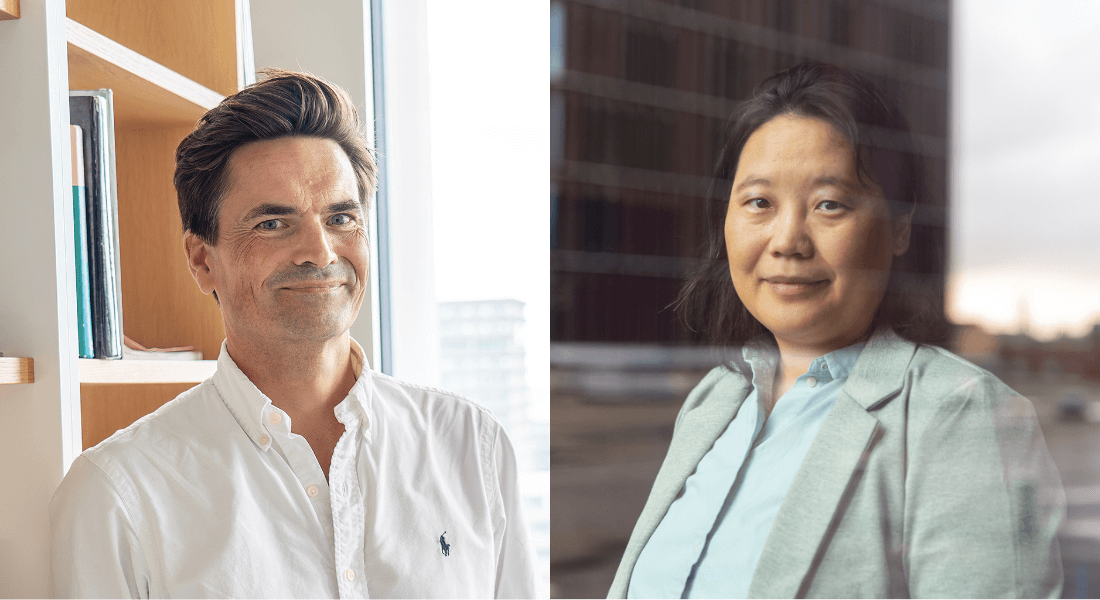DKK 130 million for two new research centres at SUND
Grants from the Danish National Research Foundation facilitates the creation of two new research centres at the University of Copenhagen. The new centres will focus on infertility and generate insight into the role of cell membranes in disease and ageing.

Why are 50 per cent of embryos lost? How does ageing and disease affect the structure of the cell surface, and how can we translate this insight into more targeted treatment?
These are some of the main questions facing the two new research centres at the Department of Cellular and Molecular Medicine at the Faculty of Health and Medical Sciences. They have been invited by the Danish National Research Foundation to enter into negotiations for the establishment of two so-called Centers of Excellence based on a 10-year grant of a total of DKK 130 million.
Professor Eva Hoffmann will head one of the two new centres, the Center for Fertility and Inheritance, focusing on causes of infertility. She is excited about the prospect of entering into contract negotiations with the foundation.
“In reality, we have very little knowledge of what causes infertility and why. So, it is a huge privilege to be given this opportunity to explore some of the fundamental questions that still need answering. With a 10-year horizon, we are able to ask different questions than we normally could,” she says.
Professor Hans Wandall, heading up the Center for Glycocalyx Research, is also excited. The centre will focus on the key role that cell membranes play in e.g. disease and ageing processes.
“It is a unique opportunity to increase focus on the surface of the cell, what impact it has on disease and ageing and our ability to improve treatment for patients,” he says.
Centre to zoom in on infertility
The Center for Fertility and Inheritance will focus on fertility and inheritance at cellular level. More specifically, the centre will look at what happens inside egg and sperm cells, fertilised eggs, embryos and during pregnancy and how it affects fertility.
“We have a huge fertility challenge on our hands. After fertilisation, 50 per cent of embryos are lost, and so are 25 per cent of foetuses. Half of the eggs of a 38-year-old woman will have chromosomal abnormalities. But we don’t know what molecular mechanisms cause this many errors. It is a largely unresearched area,” says Eva Hoffmann.
If we don’t understand the molecular mechanisms underlying e.g. infertility, it is difficult to take the next step. But that will be possible now.
The centre will use some of the funding to establish an embryo laboratory and a specialised microscope, which will enable the researchers to monitor fertilised eggs and their development for up to two weeks. Eva Hoffmann explains:
“The grant enables us to explore these challenges more in depth. It takes time and facilities to try to answer these questions, but now we will get the infrastructure and the ability to launch projects, we couldn’t before.”
The researchers hope to be able to pave the way for more specialised knowledge that can be translated into practice.
“This is an opportunity to try to answer some fundamental questions. Because if we don’t understand the molecular mechanisms underlying e.g. infertility, it is difficult to take the next step. But that will be possible now. I hope the centre can help establish a new field of research at the interface between biology and technology, and that we are able to contribute with interventions that can make a difference e.g. for people experiencing infertility,” says Eva Hoffmann.
Centre to provide greater insight into the cell surface
The researchers at the Center for Glycocalyx Research will focus on the surface of the cell and how signals to and from cells are translated.
“To understand communication between cells and how intracellular signals are translated into functional responses on the surface, it is essential to understand how the cell surface is organized”, Hans Wandall explains.
The researchers at the centre will study proteins on the cell surface and the sugar molecules attached to these proteins, the so-called glycans. They affect the way proteins are assembled into functional units, dictating cell behaviour.
“We will focus on mapping the patterns and interactions between proteins and glycans that characterize different cell types, and how these interactions change when cells are affected by factors such as inflammation or aging, as these leave distinct marks on the cell surface,” says Hans Wandall.
The goal is to deliver functional outputs benefitting patients.
They aim to use this knowledge to develop more targeted treatments for chronic diseases such as rheumatoid arthritis, Alzheimer’s and Parkinson’s disease, he points out:
“Knowledge of these interactions and patterns and the underlying mechanisms can help us develop treatment strategies that only target the cells affected by the disease.”
Eventually, Hans Wandall hopes the research will benefit future patients.
“I hope we will be able to provide a catalogue of disease- and cell-specific markers that will enable us to provide more targeted treatment. In other words, the goal is to deliver functional outputs benefitting patients.”
Contact
Professor Eva Hoffmann
+45 35 33 11 28
eva@sund.ku.dk
Professor Hans Wandall
+45 23 84 01 56
hhw@sund.ku.dk
Communications Consultant William Brøns Petersen
william.petersen@sund.ku.dk
